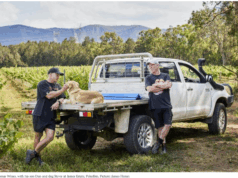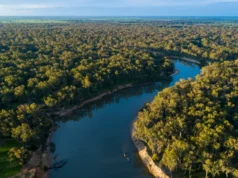
Photo credit: Ricky French
In June 1930, the New York Times ran a story commemorating the 1000th anniversary of the convening of the world’s first parliament, which occurred in a “great cleft in a fantastic lava field” in one of the last landmasses on Earth to be settled. Britain had been populated for millennia before Norwegian Vikings set sail for the frozen, steaming chunk of fire and ice in the North Atlantic we now know as Iceland.
What neither the 39 chieftains nor the New York Times could have known was that the cleft in the lava was in fact the rapidly expanding no-man’s land between the North American and Eurasian tectonic plates. By extraordinary coincidence the place chosen for the chieftains to come together was the precise point where their country was being pulled apart.
“That’s what gets me,” says Bunnik Tours guide Tina Music, as our raincoat-clad clan of 18 Australians retrace the chieftains’ footsteps in the UNESCO World Heritage-listed Thingvellir National Park. “Out of all the places to choose, why here?”
Why here, indeed? We’ve come to Iceland because no place on Earth feels so young and restless. Geologically, the island is like an excited puppy, not yet toilet trained, knocking over the furniture and making a mess everywhere. Volcanoes erupt so frequently that locals barely flinch. Lava spews beneath glaciers, unleashing massive floods that rip through valleys and sweep away bridges. Geysers gush, mud boils, and the earth steams and smokes its head off everywhere you look. It’s the antithesis of the ancient, geological spent force that is Australia. But we’ve also come to meet its people, to learn how they survive on a frigid, resourceless island that offers virtually nothing except hot water and steam.
Read the full story here


